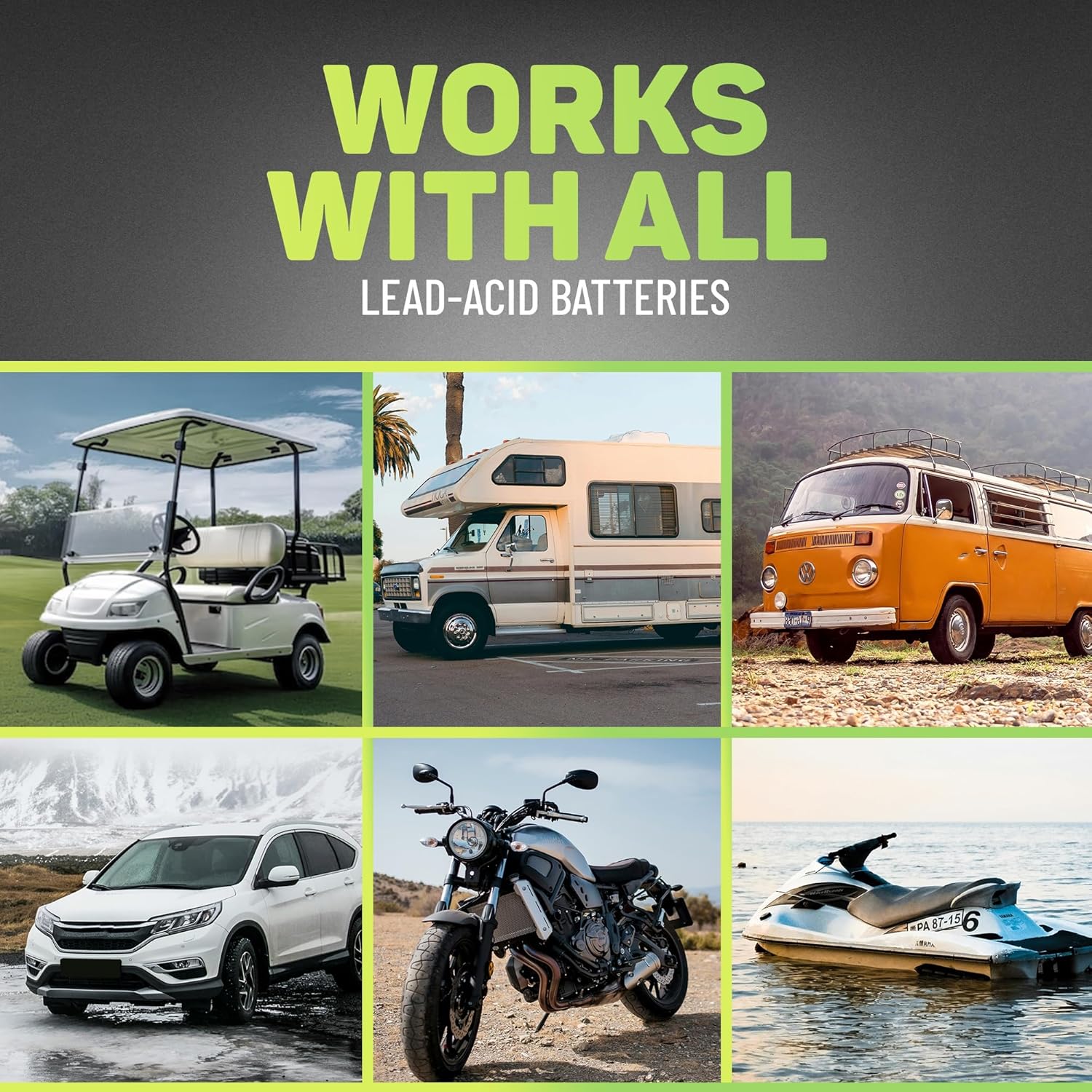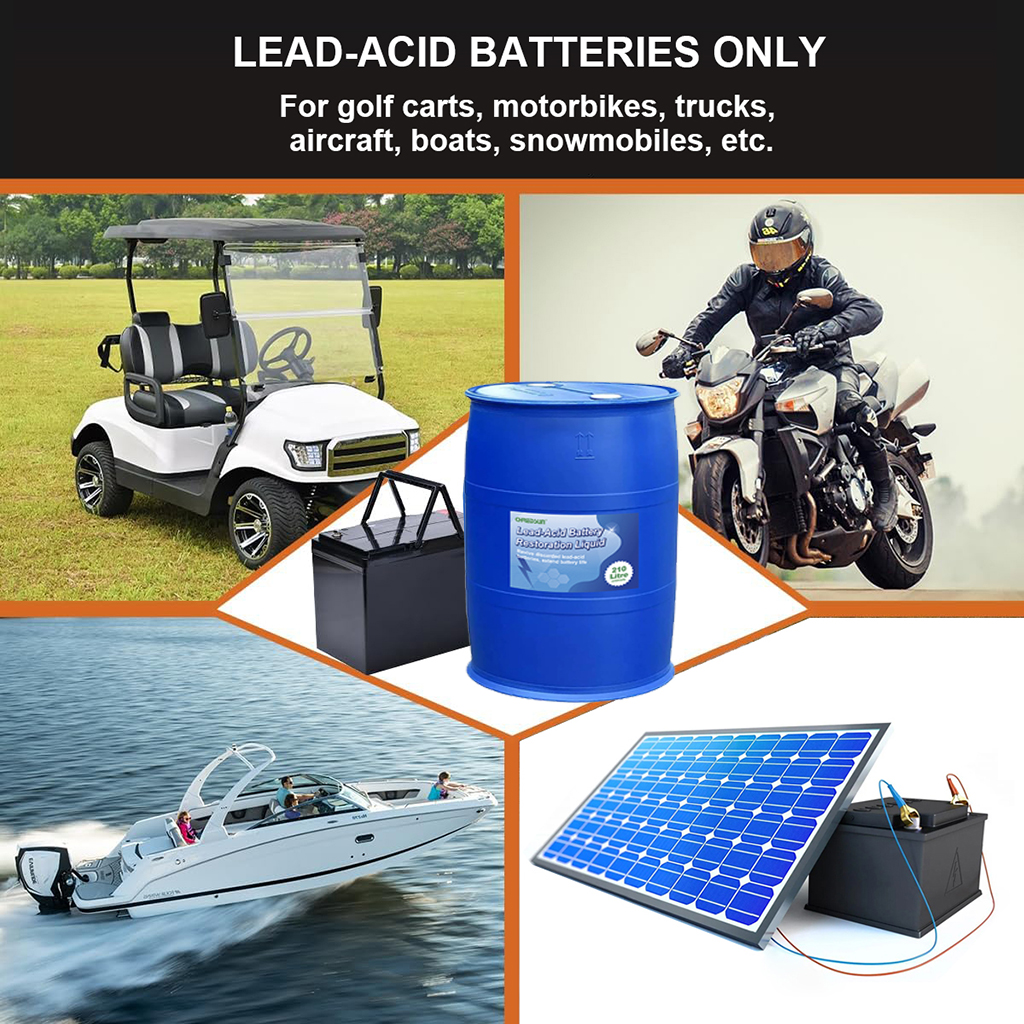Main Components of Lead-Acid Battery Repair Fluid
Typical repair fluids for lead-acid batteries consist of several chemical components, including ammonium molybdate, sodium hypophosphite, sodium pyrophosphate, sodium thiosulfate, ammonium chloride, and distilled water. Some formulations may also include a mixture of distilled water and sulfuric acid, or dilute sulfuric acid with other chemical additives.
Restoration Principle
During the charge and discharge cycles of a lead-acid battery, the sulfuric acid in the electrolyte reacts with the lead on the plates, forming lead sulfate crystals. Over time, these crystals accumulate, leading to decreased battery performance. Repair fluids help restore battery performance through the following mechanisms:
Dissolving Lead Sulfate Crystals: The chemical components in the repair fluid soften and dissolve lead sulfate crystals, allowing them to re-enter the electrolyte and restore the activity of the plates.
Protective Film Formation: Certain components react with the plate material to form a protective film. This film prevents secondary sulfation, thereby enhancing the battery's lifespan and efficiency.
For severely sulfated lead-acid battery plates, pulse repair can be used as an auxiliary method. This method involves treating the battery with high-frequency positive and negative pulses to effectively dissolve large lead sulfate particles and prevent their further growth. This process typically takes 8 to 12 hours and is known for its high efficiency and low energy consumption.

Lead-acid battery repair case

wholesale Lead-Acid Battery Repair Fluid
Advantages of Using Repair Fluid
Using repair fluid can lead to several improvements in lead-acid battery performance:
Capacity Restoration: It effectively removes internal lead sulfate crystals, restoring battery capacity to near-normal levels. In some cases, it can improve mileage by 5% to 15%.
Extended Lifespan: Regular charging and discharging after treatment can restore battery performance to over 90%, potentially extending its lifespan by about a year.
Improved Charge Acceptance: The battery's ability to accept a charge is enhanced, and gas evolution during charging is reduced, increasing overall efficiency.
Activated Chemical Reactions: Active ingredients in the repair fluid promote the regeneration of active materials within the battery, facilitating smoother current flow and improving discharge capacity and efficiency.
Precautions
When using repair fluid, consider the following:
Compatibility: Ensure the repair fluid is specifically designed for lead-acid batteries and is not used on other battery types like lithium-ion.
Dosage Control: Accurately control the amount of repair fluid added, as both over or under-dosing can negatively affect the results.
Leakage Prevention: Handle the fluid carefully to avoid spillage.
Avoid Inferior Replacements: Do not use ordinary water or substandard lead-acid battery supplements, as these can damage the battery.
Assess Battery Condition: Evaluate the battery's condition before use. Severely aged or physically damaged batteries may not benefit significantly from the repair fluid.
English
العربية
Français
Русский
Español
Português
Deutsch
italiano
日本語
한국어
Nederlands
Tiếng Việt
ไทย
Polski
Türkçe
አማርኛ
ພາສາລາວ
ភាសាខ្មែរ
Bahasa Melayu
ဗမာစာ
தமிழ்
Filipino
Bahasa Indonesia
magyar
Română
Čeština
Монгол
қазақ
Српски
हिन्दी
فارسی
Kiswahili
Slovenčina
Slovenščina
Norsk
Svenska
українська
Ελληνικά
Suomi
Հայերեն
עברית
اردو
Afrikaans
Gaeilge
नेपाली
Aymara
Беларуская мова
guarani
Krio we dɛn kɔl Krio
Runasimi
Wikang Tagalog



























